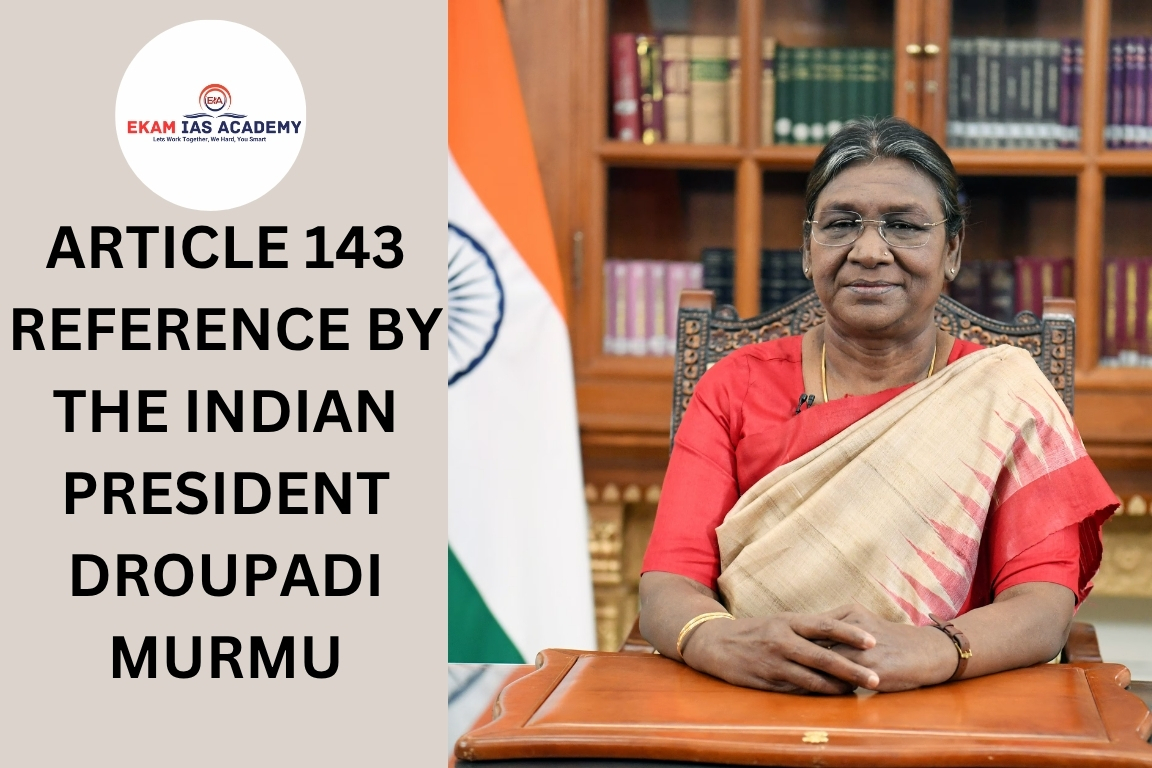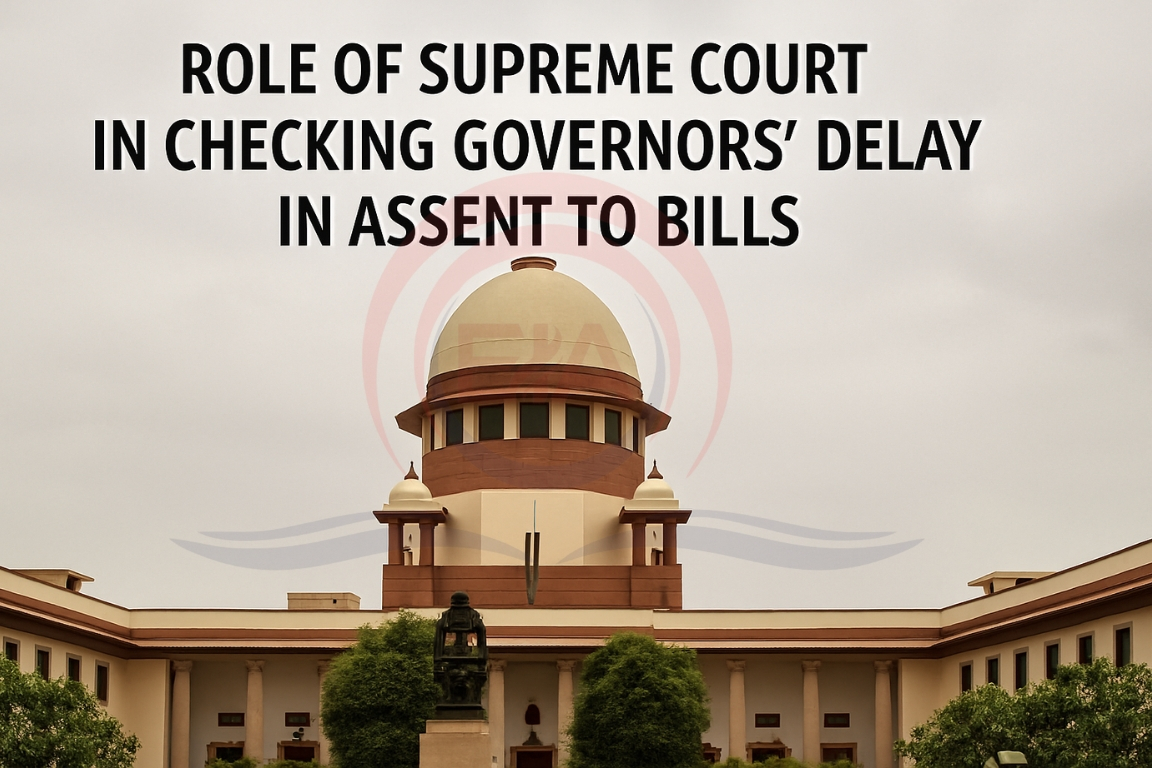Introduction
In a significant constitutional move, President Droupadi Murmu has invoked Article 143(1) of the Indian Constitution, seeking the Supreme Court’s opinion on 14 critical questions concerning the roles of the Governor and the President in the legislative process. This follows the landmark April 2024 Supreme Court ruling introducing the concept of “deemed assent”, igniting nationwide discussions about federal structure and constitutional powers.
What is Article 143?
Understanding Article 143(1)
Article 143(1) empowers the President of India to refer questions of law or fact to the Supreme Court if these questions hold public importance. While the Supreme Court’s opinion is not binding, it carries significant legal and constitutional weight.
Importance of Article 143
This article ensures institutional balance and clarity, especially when there are ambiguities in governance. It strengthens the checks and balances mechanism within India’s constitutional framework.
Keywords: Article 143, Supreme Court Opinion, President Reference, Constitutional Powers
Relevant Constitutional Provisions
- Article 200 – Outlines the Governor’s powers regarding State Bills (assent, withhold, return, or reserve for President).
- Article 201 – Defines the President’s powers to assent or return Bills reserved by Governors.
- Article 361 – Grants immunity to the President and Governors from legal proceedings.
- Article 142 – Gives the Supreme Court authority to pass orders for “complete justice.”
- Article 131 – Empowers the SC to settle Centre-State disputes.
- Article 145(3) – Constitutional interpretation requires a minimum 5-judge bench.
Keywords: Article 200, Article 201, Article 361, Article 142, Constitutional Law India
Key Constitutional Questions Referred to the Supreme Court
1. Governor’s Powers on Bills
What are the legally permissible options a Governor can exercise when a State Bill is presented?
2. Role of State Cabinet
Is the Governor constitutionally bound by the advice of the State’s Council of Ministers?
3. Judicial Scrutiny of Governor’s Discretion
Can decisions made by the Governor under Article 200 be challenged in the judiciary?
4. Limits of Judicial Review under Article 361
Does Article 361 fully shield the Governor from court scrutiny?
5. Imposing Deadlines
Can the Court mandate timelines for Governors and the President to act on Bills?
6. President’s Discretion under Article 201
Is the President’s discretion under Article 201 open to judicial review?
7. Must President Refer Back to SC?
Should the President always seek the Supreme Court’s opinion before acting on reserved Bills?
8. Court Interference Before Bill Becomes Law
Can courts interfere with a Bill’s content before it becomes law?
9. Can SC Override Executive Powers Using Article 142?
Is it constitutionally valid for the SC to override executive decisions using Article 142?
10. Legal Status of Bills Without Assent
Are Bills pending assent considered as laws?
11. Constitution Bench Necessity
Should such matters be heard only by a Constitution Bench?
12. Scope of Article 142
Can Article 142 be used to override existing laws?
13. Exclusive Route for Centre-State Disputes?
Is Article 131 the only pathway to address such disputes?
14. Timelines on President’s Role
Can the SC set specific deadlines for Presidential action?
Keywords: Governor’s Role in Bills, Presidential Assent, Article 142 SC Powers, Constitution Bench India
Background: The April 2024 Verdict and Beyond
The Supreme Court’s April 2024 ruling introduced the concept of “deemed assent”—if the Governor does not act on a Bill within a reasonable timeframe, it is assumed to be passed. This decision sparked legal and political discussions.
Notable Cases
- Tamil Nadu vs Governor R.N. Ravi: Delay in assent triggered legal battles.
- Punjab & Kerala Conflicts: Accusations of political bias and unjustified withholding of Bills by Governors.
Why This Matter Is Constitutionally Crucial
These 14 questions impact the federal balance, separation of powers, and efficiency of legislative functioning. Clarification by the SC can:
- Define the boundaries of constitutional roles.
- Improve Centre-State relations.
- Avoid future legislative and administrative deadlocks.
Separation of Powers in India
India follows a functional separation among the Legislature, Executive, and Judiciary:
Legislature
Makes laws (Parliament & State Assemblies).
Executive
Implements laws (President, PM, Council of Ministers).
Judiciary
Interprets and enforces laws (SC, HCs, Lower Courts).
Constitutional Provisions Supporting Separation
- Article 50 – Advocates separation of judiciary from executive.
- Article 121 & 211 – Prohibit debates on judicial conduct in legislatures.
- Article 122 & 212 – Prevent judicial review of legislative procedures.
Doctrine of Limited Separation
- India’s system allows interdependence between organs.
- Judiciary ensures constitutionality through judicial review (Articles 13, 32, 226).
Conclusion
The President’s Article 143 reference to the Supreme Court is a crucial constitutional moment. It seeks to resolve ambiguities in the powers of Governors and the President, ensuring greater transparency, accountability, and legal clarity. The outcome will shape India’s federal structure and democratic functioning for years to come.
Keywords to Target: Article 143 President Reference, Governor Bill Assent, Supreme Court Constitution Bench, Separation of Powers India, Federalism in India





